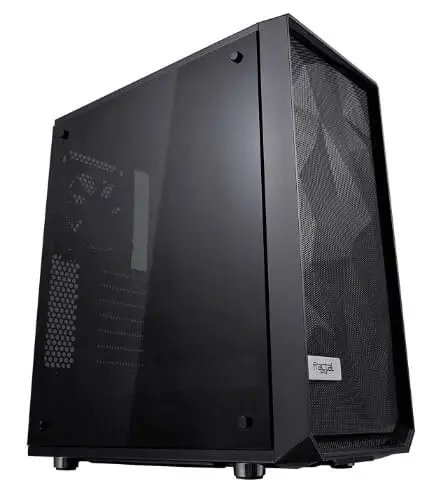
Need air filters? Aftermarket magnetic dust filters are plentiful on Amazon at a reasonable price. A regular cleaning regimen (two or three times a year should be good) and filtered intakes should help you keep on top of dust. So, we wouldn’t worry too much about air pressure as far as dust is concerned. Overclockers ran a torture test of all three pressure setups and found that dust buildup was almost identical between the three. In practice, though, it doesn’t seem to matter much, if at all. Since these openings aren’t filtered, the theory is that this will result in a dustier rig. On the other hand, a negative pressure setup will potentially suck air in through all the unfiltered gaps and holes in your case, such as panel gaps and PCIe slot covers. With a positive pressure setup, the air will primarily come in through your (hopefully filtered) fan intakes, which reduces the dust that ends up inside your system. The received wisdom is that positive air pressure is ideal since it’s better at keeping dust out of your system.
#2017 best airflow cases Pc#
Your fan setup influences your case’s air pressure, which allegedly affects how dusty your PC gets. Case Air Pressure and Dust ManagementĬooling isn’t the only thing you need to worry about when settling on your PC fan configuration.
#2017 best airflow cases free#
You likely won’t benefit hugely from anything more, but feel free to experiment if you have the time (and fans). We have an entire article dedicated to answering how many fans a PC should have with even more testing results and unique configurations to consider if you’re curious, but they don’t change our general three-fan recommendation. To that end, we’d recommend a two-intake, one-exhaust PC fan configuration for most air-cooled setups. Adding a single top rear exhaust fan helped reduce CPU temperatures by another three degrees, but that was about it: Linus Tech Tips tested a few fan configurations, finding that the classic two-intake one-exhaust fan setup served as a solid middle ground. It might be tempting to go all out with PC fan placement and fill every fan mount in your case to try and brute force your way to good airflow. If your fans don’t have any arrows indicating flow direction, it’s safe to assume they follow this standard. Almost all case fans follow the same convention: air flows towards the fan’s protective grille. When installing PC fans, ensure that you get the case fan direction right for intake and exhaust. This maintains a bottom-to-top airflow direction and takes advantage of hot air’s tendency to rise. Bottom mounted fans, in contrast, are almost always configured as intakes. Top-mounted fans can be both intake and exhaust but are commonly used as exhausts in the top-rear of the case. Most modern PC cases will also have extra fan mounts at the top and bottom of the case. Cool air comes in through one (or more) intake fan at the front of your case, while a rear exhaust fan removes the hot air. Front-to-back airflow is the standard, and almost every PC case on the market supports it. Configuring Your Case FansĪirflow in a PC case generally flows in two main directions: front-to-back and bottom-to-top.
#2017 best airflow cases install#
If noise concerns you, make sure to install the largest fans your case supports. So, a 140 mm fan needs less RPM to push a similar amount of air as a 120 mm fan, which results in lower noise levels. The larger the fan, the more efficient it is. Source: NZXT / EKįan sizes are also important. So, while these sorts of cases (the NZXT H510 and H510 Elite, for example) are great on the eyes, they’re not quite as great for your temperatures. Solid front panels severely limit airflow, which in turn impacts cooling performance.

The most crucial part of good airflow is getting the right case. Namely, the case you build your rig in and the fans you populate it with. Choosing the Right Case and Fansīefore we get into the nitty-gritty of PC airflow optimization, it’s critical to discuss the basics of good airflow. If you’re new to setting up PCs, this guide should help you figure out how best to set up the airflow in your current and future rigs. Still, it requires familiarity with PC fan types, fan positioning, and different air pressure setups. Getting your rig’s airflow right isn’t too difficult. So, to help you avoid that, we’ve come up with a quick PC airflow guide designed to help you get to grips with this aspect of PC building. There’s no point buying the most expensive hardware if it ends up throttling due to high temperatures.

Airflow isn’t the most glamorous part of building a gaming PC, but it’s arguably one of the most important.


 0 kommentar(er)
0 kommentar(er)
